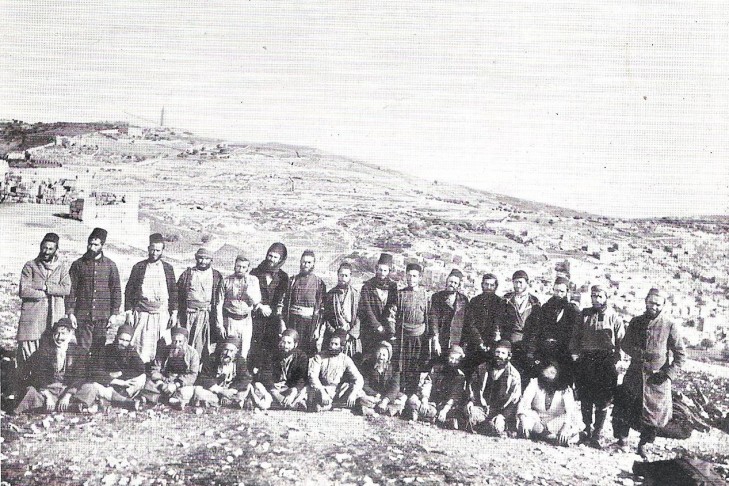When Cary Aufseeser first began researching his family in 2002, he didn’t even know the names of all his great-grandparents. Today he can trace his roots back to the Middle Ages and has found hundreds of distant relatives all over the world (and perhaps some new Mexican Americans too).
The Jews that originally came from Spain are called Sephardic Jews. In 1492 the Catholic Church offered the Jews of Spain two choices: convert to Catholicism or leave the country. Those that converted were known as Conversos. There are no records to verify the numbers but it is believed that 200,000 to 800,000 Jews were expelled from Spain and those that converted were 50,000 or more. Some Jews that chose conversion continued their Jewish traditions in secret. If they were discovered practicing Jewish traditions, they were tortured until they confessed and then burned at the stake by the Inquisition.
My Family Research
I wanted to discover if I was descended from Sephardic Jews on my mother’s side of the family. My mother had always said that her family was expelled from Spain, went to Scotland and then to Germany. Sephardic records are difficult to find and many that would help to trace a family may not exist. Family stories that have been passed down may be all that descendants have. DNA testing may be the only option.
I had my autosomal DNA tested through Family Finder at Family Tree DNA. A large number of Jews use this site, so this was the most logical choice for testing.
After my results came back, I was contacted by Crispin Rendon, a Mexican genealogist who matched my results on certain DNA strands. Crispin actually has documentation (written records) for his family back to the 1300s. Some of his ancestors were known Conversos. Later I was contacted by another person, Kevin Brook, author of “The Jews of Khazaria,” because of DNA matches Kevin found with me.
Kevin is doing a study of Mexican Americans with DNA matches to Jews that have Sephardic heritage. Kevin, Crispin and I all discovered a match in a very specific sequence on Chromosome 10 of their DNA. They think this may be the Sephardic link they are looking for, but at this stage it is only a hypothesis.
There are now up to 60 Jews and Mexican Americans they have found with this matching sequence. The link may be through the ancestors of Conversos with Jewish roots that originally came with the Conquistadors to the New World and others that settled there afterward. Needless to say, many of the present-day Mexican Americans getting this DNA match had no idea they had Jewish ancestors.
A Work in Progress
I hope to find a specific common ancestor through the results in this ongoing study. That common ancestor may be from 10 to 20 generations back. Following written records through documents is also critical. Since many of these people have come to dead ends looking for written records, the hope is to find others through this DNA strand match who have been able to trace their families through records. At this point only Crispin and a few others have a paper trail.
Since each human being only inherits approximately half of their DNA from each parent, not everyone who is descended from the Sephardic Jews would have this match on Chromosome 10. On the other hand, Jews are endogamous, like a number of other groups (such as New England Puritans). Jews tended to marry other Jews who lived in the same area. This may help strengthen the transmission of certain shared DNA strands.
My maternal grandfather’s ancestors settled in Silesia in Germany. This is not an area that is known as a place where Sephardic Jews settled. The surname of Kevin’s Sephardic family was Maimon. Kevin knows this because he has actual documentation. They settled in Galicia.
Additional Note
The Ashkenazi Jews were those that eventually settled in Germany and Eastern Europe many generations after the dispersal of the Jews from Jerusalem in 70 AD. People think of Ashkenazi Jews as those who lived in Eastern Europe and Sephardic Jews as those of the Spanish diaspora. However, some Jews of Sephardic descent also came to settle in Eastern Europe.
Ashkenazi and Sephardic Jews have different customs and rituals. The food eaten on Jewish holidays is different. The custom for naming children is different. The languages spoken in the home are different. Sephardim spoke Ladino and Ashkenazim spoke Yiddish. Although both languages are written in Hebrew characters, Ladino sounds Spanish and Yiddish sounds German.
To learn more, go to sephardicgen.com/mexico_sites.htm.
For information on the Jewish Genealogical Society of Greater Boston, visit jgsgb.org.

This post has been contributed by a third party. The opinions, facts and any media content are presented solely by the author, and JewishBoston assumes no responsibility for them. Want to add your voice to the conversation? Publish your own post here. MORE


